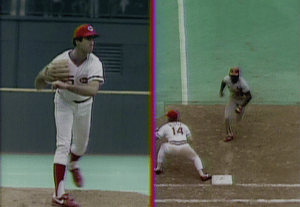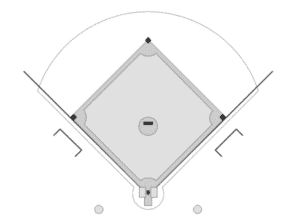The 2021 Minor League Rule Change Experiment
The 2021 Minor League Rule Change Experiment
The minor leagues are the final proving ground. Players that adapt to the speed of the game, exhibit the most consistency to perform and outplay their minor league peers head to the big leagues. Most minor leaguers, however, eventually head home with no more than a whiff of what it is like at the top of the baseball food chain.
![]()
Now, MLB is expanding the minor league proving ground to include a rule change laboratory. This year’s minor league season will start with 40 fewer teams (1,000 fewer players) and a beaker full of experimental rules designed to improve the game. The official announcement from MLB:
MLB will closely monitor and analyze the impact of each rule change throughout the 2021 season and report to Clubs on their effects for further analysis. Consistent with the preferences of our fans, the rule changes being tested are designed to increase action on the basepaths, create more balls in play, improve the pace and length of games, and reduce player injuries.
Here’s a rundown of the rule changes for 2021 minor league season.
Low A Ball All Leagues
Pickoff Limitation
Pitchers are limited to a total of two pickoff attempts per plate appearance. This includes “step offs” or “pickoffs.” A pitcher may attempt a third step off or pickoff but if the runner is not retired, it is a balk. This could eventually be reduced to a single step off or pickoff per plate appearance.
17 Pickoff Tosses in One Plate Appearance
https://www.mlb.com/news/vince-coleman-drew-most-pickoff-throws-ever
Baseball Rules Academy Comment: What not clear is whether a step off without a throw over is considered a pickoff attempt. What if the pitcher steps off because he wants a new sign from the catcher? Is that considered a step off attempt? If yes, then confusion over pitch signs can result in a balk.
Remember that when a pitcher steps off and throws wildly to a base and the ball goes into dead ball territory, the runner is awarded two bases. If the pitcher simply throws a wild pickoff (without stepping off) and the ball goes into dead ball territory it is a one base award.
Low A Ball Southeast
Automatic Ball-Strike System (ABS)
Robot Umps, previously tested in the independent Atlantic League and the Arizona Fall League are here to stay. There will still be an umpire positioned behind home plate. The Hawk-Eye Tracking System will deliver the ball strike decision to the HP umpire with an audio signal who then makes the call. The goal is improved accuracy and reduced controversy since human umpire strike zones vary and it is tough to argue with a robot.
Baseball Rules Academy Comment: There goes the concept of pitch framing and the art of convincing an umpire that a ball off the plate is really a strike. Umpires don’t care for that anyway.
Low A West Pitch Clock
A 15-second pitch clock is in effect in 2021. There has been a 20-second pitch clock in effect in AA and AAA since 2015 and it has had a real impact on the length of games cutting 12 minutes off game times.
Baseball Rules Academy Comment: Pitchers may still be able to work around this rule by stepping off the rubber, which restarts the clock. Except of course with a runner on base which might result in a balk.
High A Step Off Moves Only
Pitchers must disengage the rubber (by stepping off to the backside of the rubber) before attempting a pickoff throw. This rule includes lefthanded pitchers who can no longer use a deceptive leg lift to lure a runner off the base.
When MLB implemented a similar rule in the second half of the Atlantic League season in 2019, the result was a significant increase in stolen base attempts and successful stolen bases.
Baseball Rules Academy Comment: If MLB wants to increase stolen base attempts, the first step should be encouraging umpires to enforce the balk rule as it is written in the Official Baseball Rules. Over the last few years more and more pitchers have developed a shimmy, shake, and twitch stretch position strategy that is technically a balk and has effectively shut down the MLB running game.
Double A Defensive Positioning
The defensive team must have a minimum of four players on the infield and each of them must be on the infield dirt. MLB will watch the effects of this rule closely. Depending on the results, MLB may require two infielders on each side of second base in the second half of the season. This rule is intended to improve batting averages on balls in play.
Baseball Rules Academy Comment: This rule should be called the Slow Footed Lefthanded Hitters Relief Act. Defensive shifts have crushed lefthanded hitters in just about every ball in play offensive category except home runs. Most LH defensive shifts include a fleet footed shortstop playing shallow right field snagging just about every ground ball of the bat. We are not sure if this is the answer to the question “Are slow footed lefthanded hitters necessary anymore?”
Triple A Larger Bases
The standard size of a base is 15 inches. The new rule for AAA is increasing the size of the base to 18 inches, reducing the height by one-half inch and using a new material which is less slippery in wet conditions. The MLB Competition Committee suggests this change will improve safety with fewer collisions and fewer injuries. Adding three inches to the size of the base also shortens the baseline from home to 1B by three inches making bang-bang plays even closer.
Baseball Rules Academy Comment: If bases are three inches bigger, that means the distance between 1B and 2B and 2B and 3B is now three inches shorter. This could improve stolen base chances and add offense to the game. It also allows runners to become more creative with elusive slides especially those runners wearing an oven mitt.
Each Triple A stadium will install new peg holes for the bases so that the larger base (now 18″) will not overhang into foul territory.
The distance from home to 1B is measured from the tip of home plate to the back edge of 1B. So, the new AAA base will be 1.5″ closer to home plate. Perhaps enough to make a small difference but probably unnoticeable to most of us. So, the ballfield is no longer a 90-foot diamond. Let that sink in.




This is AAA baseball, not your local Little League. I’m SURE they’re not going to use the existing pegs and have the bases stretch an inch and a half over the foul lines. Imagine the arguments they’ll have if the batted ball hits the outside of the base in foul territory. They’ll move the pegs so that the far edge of the base is still 90′ away from the back tip of home and the outside edge is still on the foul line, meaning the base will be 3″ closer to home. But we’ll still have 90′ bases.
Note that the peg at 2b need not be changed. It is already set at the vertex of the square (diamond), so the base already lies beyond the 90′ square. It will just lie an additional 1.5″ further beyond the square. The distance from 1b to 3b will be decreased by 4.5″ (3″ from the foul line and 1.5″ from the center of 2b).
So, if you really want to be technical, it NEVER WAS an exact 90′ square because 1b and 3b lie completely inside the square but 2b lies with its center at the vertex and 3/4 of the base actually outside the 90′ square.
Nice article but the math is flawed. Home to first is not measured to the front of 1st base, it is measured to the back corner of the base. 1st/3rd to second is not measured from back corner to back corner so you are not gaining the full 3″ of the new 2nd base , you are only getting the radius of 1.5″.
Home to 1st is measured from the point of the plate to the back corner of 1st base(at edge of foul line). So the previous distance from home to first was actually 88’9″. The new distance is 88’6″ if the base plugs are moved to keep the corner at 90′. If fields are using the existing base plugs(which is probably the case) then first base will only be 1.5″ closer to home, so 88’7.5″. This will also mean that 1st base will be 1.5″ in foul territory. Maybe every field will go through the process of digging up and moving all the base plugs.
1st to 2nd and 2nd to 3rd are measured from the back corner of 1st/3rd(at edge of foul line) to center of 2nd base. The current distance between the bases is 88’1.5″. If they using the existing base plugs, then the new distance between bases is 87’10.5″. If the base plugs are moved, then the distance would be 87’9″ and the distance from home to second would also be increased meaning a slightly longer throw for the catcher.
Thanks for your information. At this point there is not much detail available from MLB about the bases but teams are assuming that existing pegs will ben used. We have edited the article to show some of your math calculations.